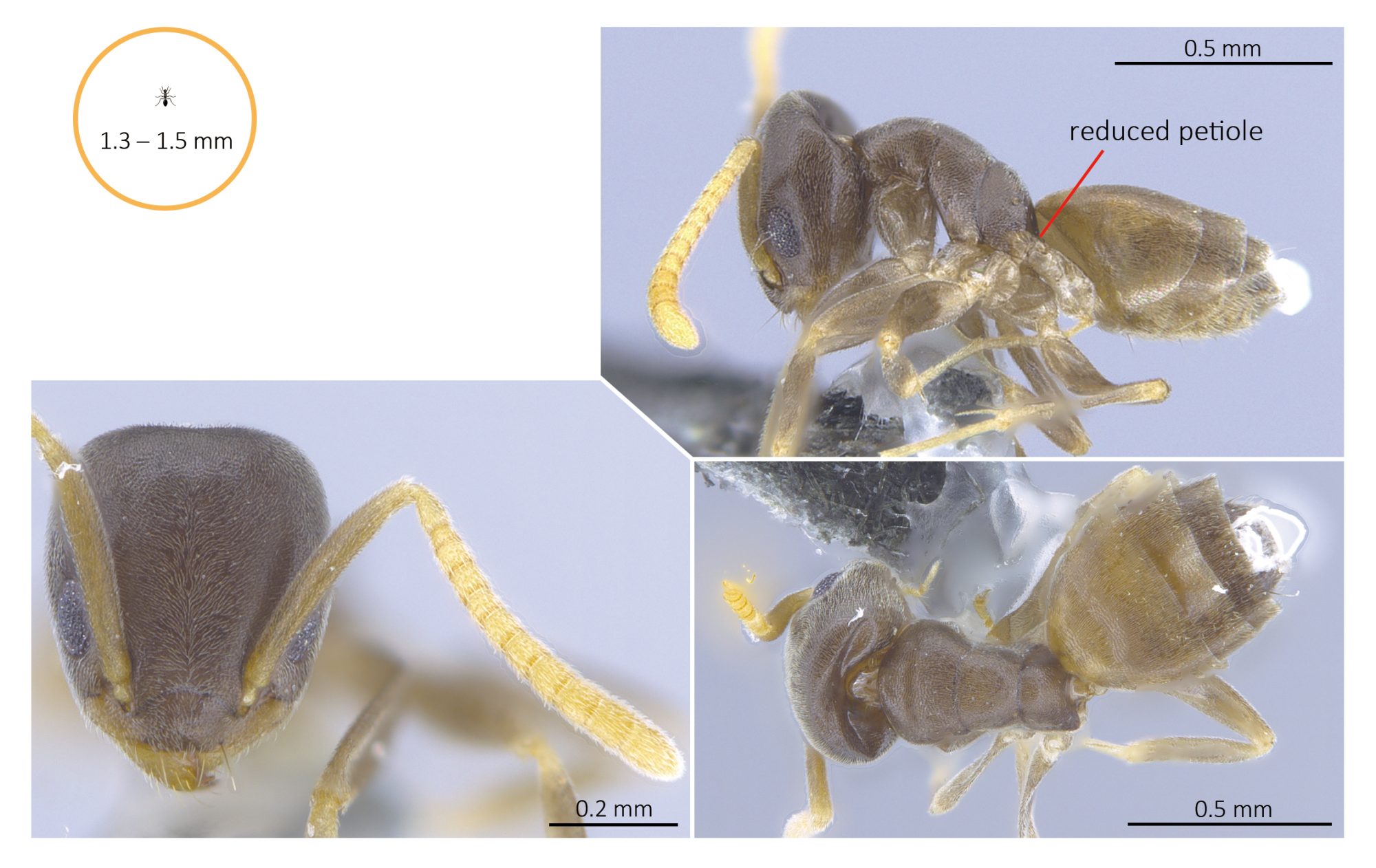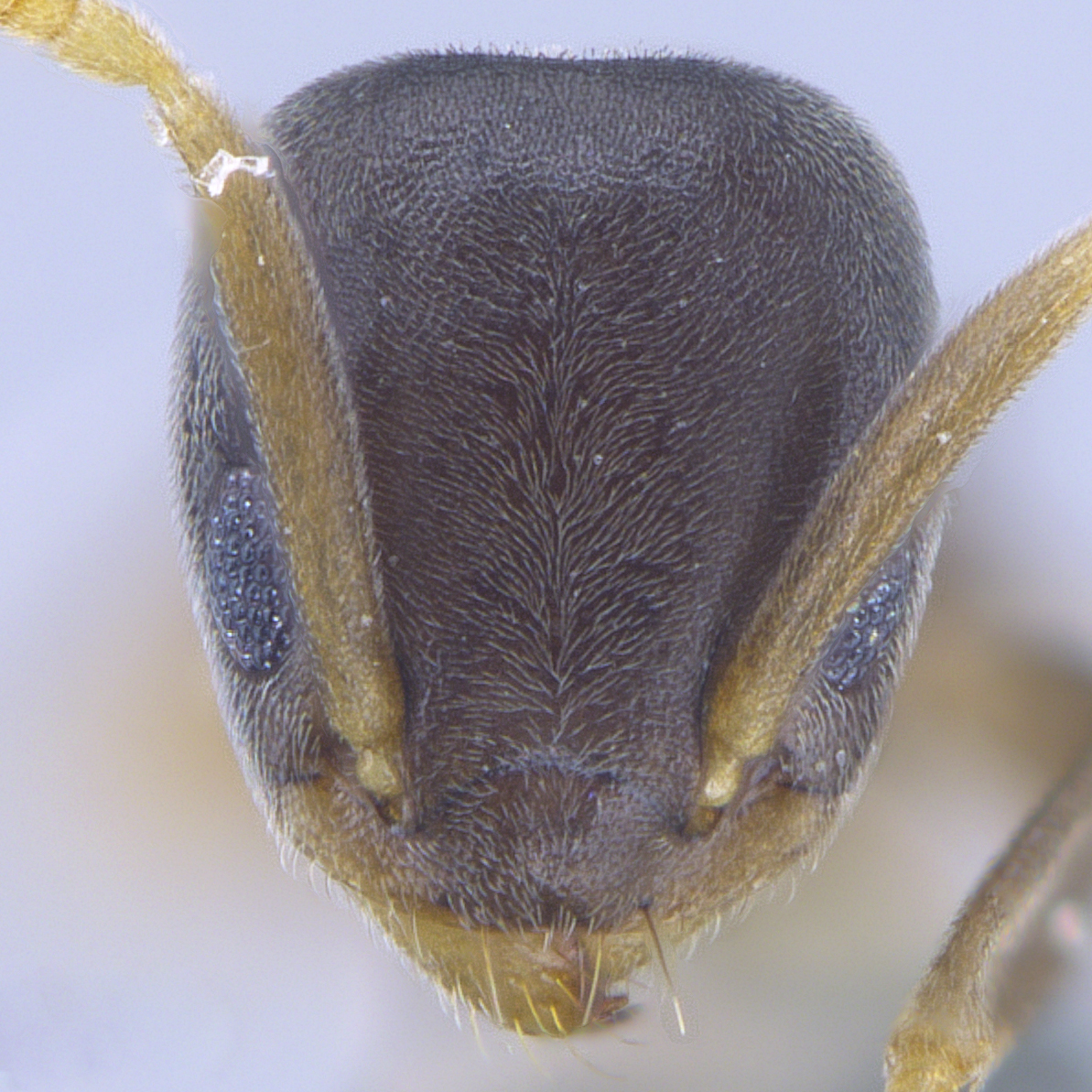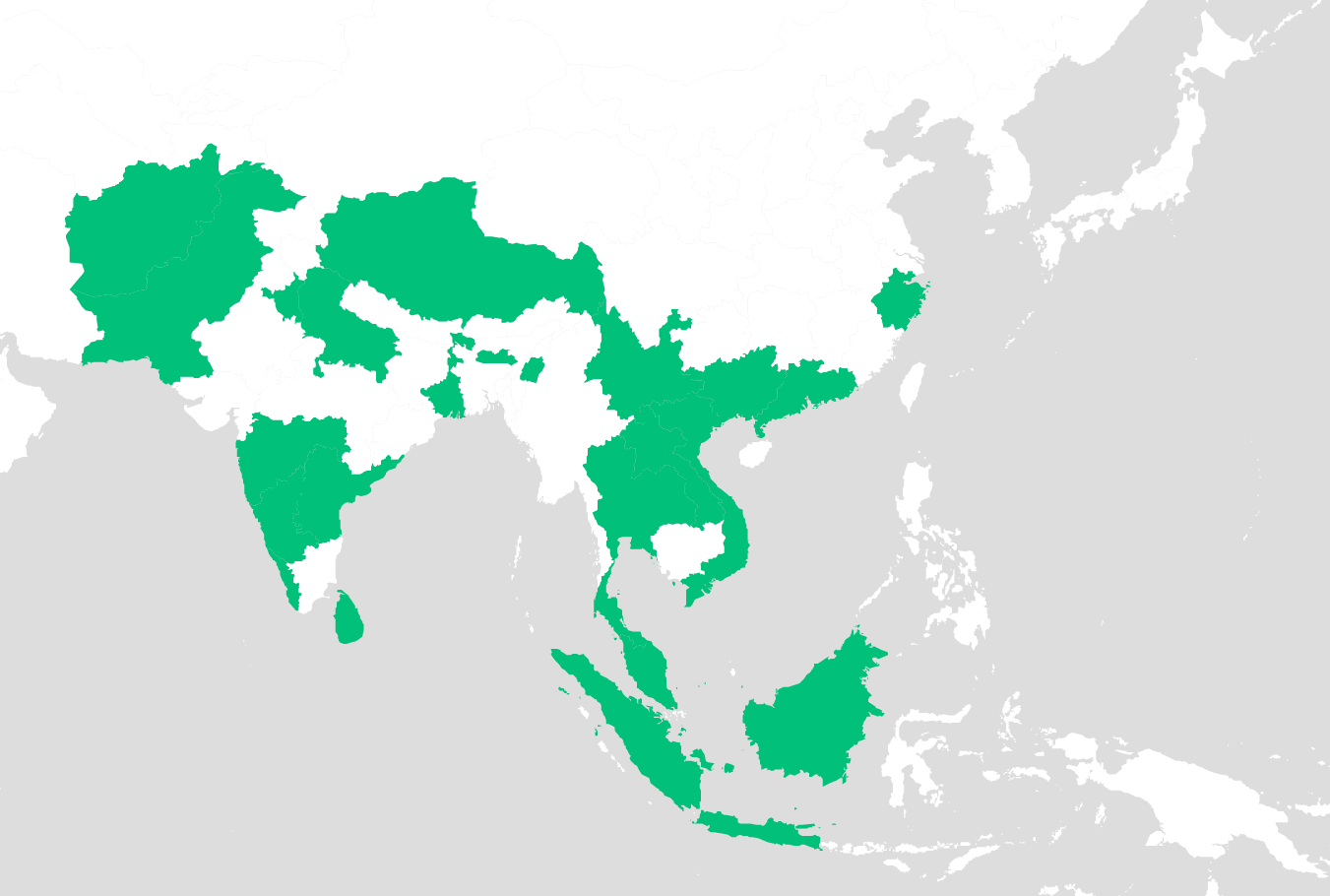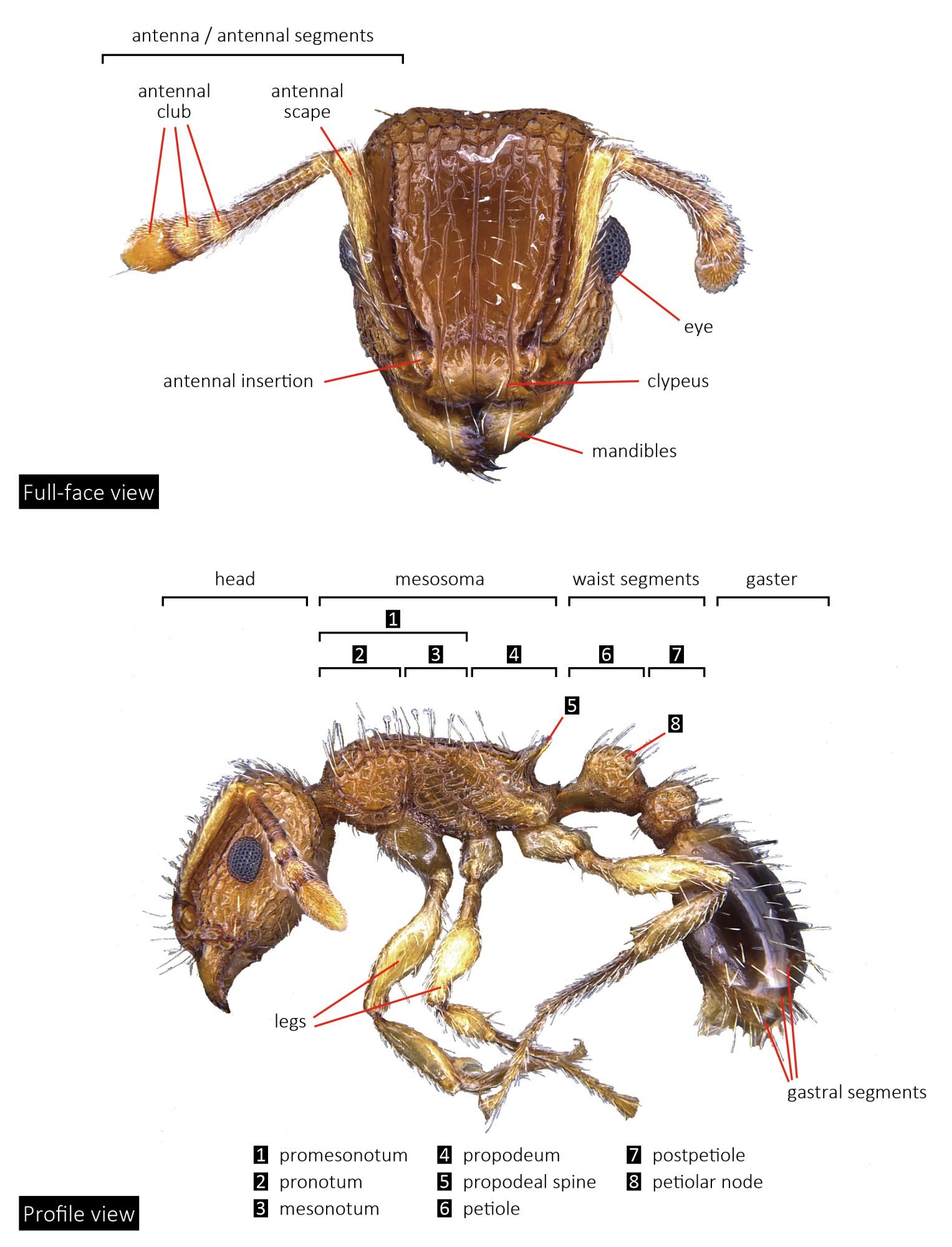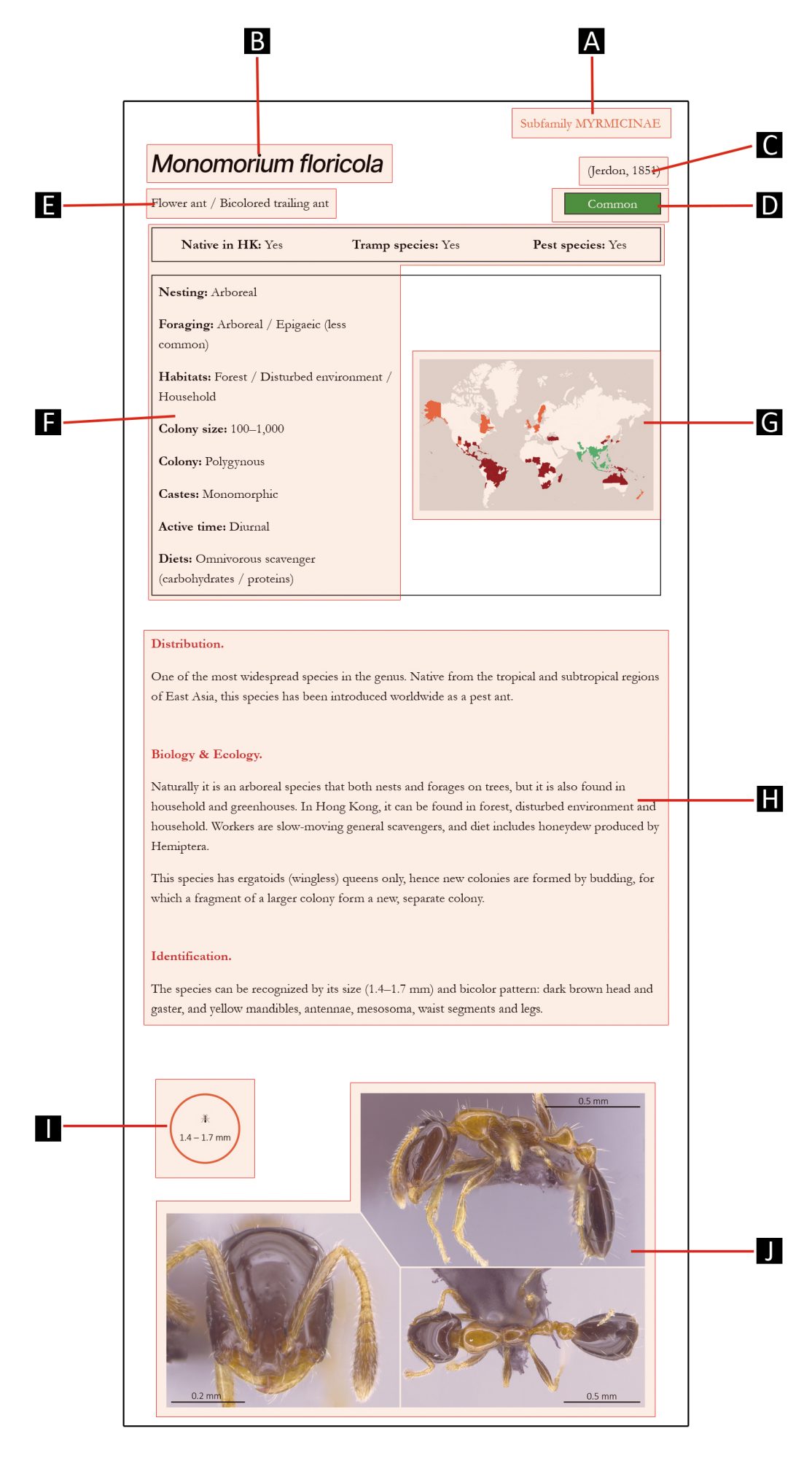
Subfamily DOLICHODERINAE
Tapinoma indicum
Forel, 1895
Ghost ant
Common
Native in HK: Yes
Tramp species: Yes
Pest species: Yes
Distribution.
Native from the tropical and subtropical regions of East Asia, this species is a known tramp species but has not yet been introduced to other places beyond its native range, although it is possibly under-recorded.
Biology & Ecology.
This species is able to nest in small crevices inside households, and is one of the most frequent household pest ants in Southeast Asia, such as in Malaysia and Singapore. In Hong Kong, this species can be found in both forest and open habitats.
Workers are general scavengers and are attracted by all food sources, including food waste from human. Workers are active the whole-day, though they are slightly more active at night than during daytime, with their activities peak at dawn and drop drastically as temperature rises.
Identification.
This species can be recognized by its small size (1.3–1.5 mm) and the absence of waist segment. ‘Ghost ant’ in the strictest sense refer to its sister species T. melanocephalum only, but due to small size it is usually not easy to differentiate one another, and since both species have similar native range and are both common household ants, the name has, sometimes, been extended to this species as well.
